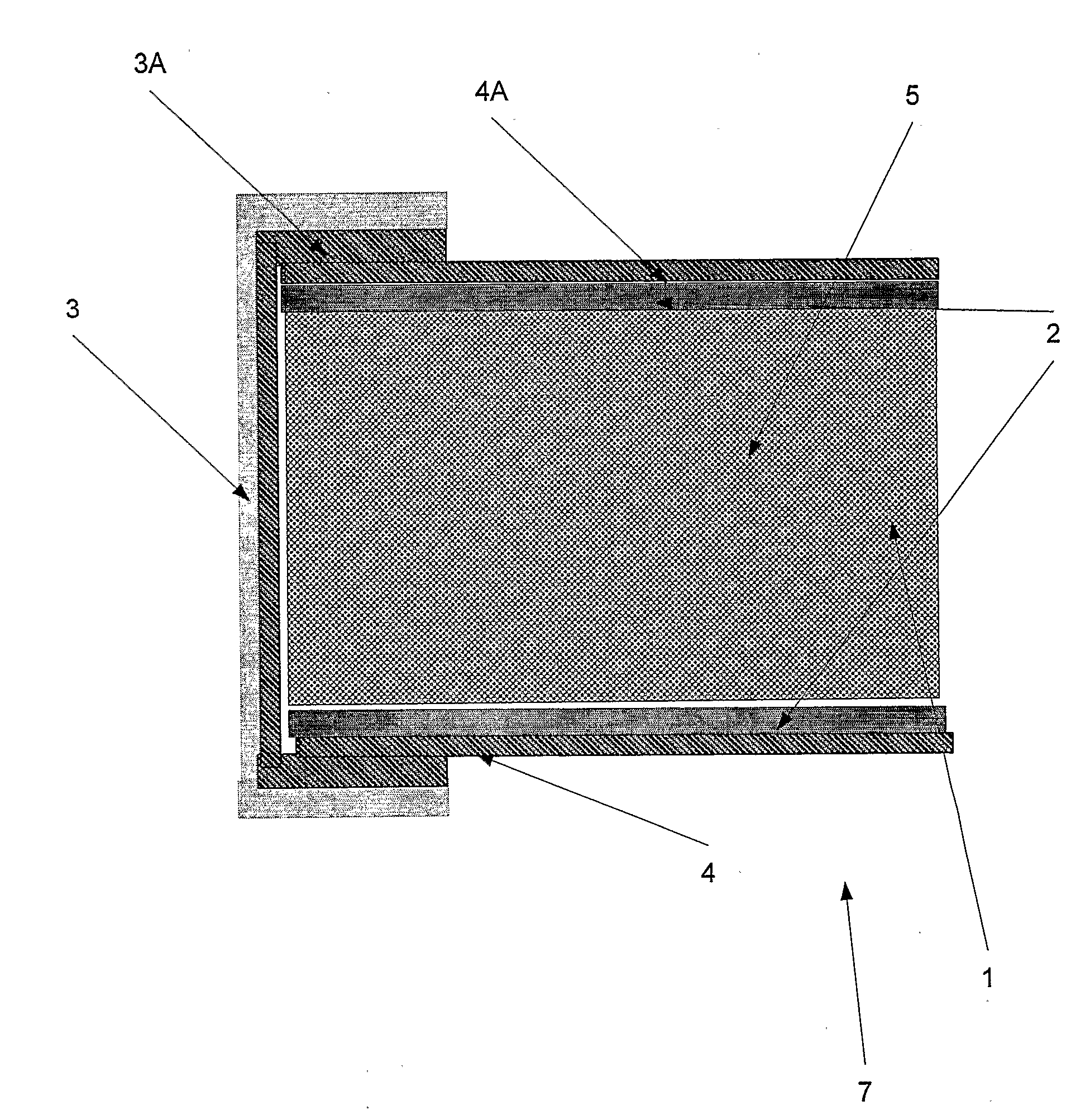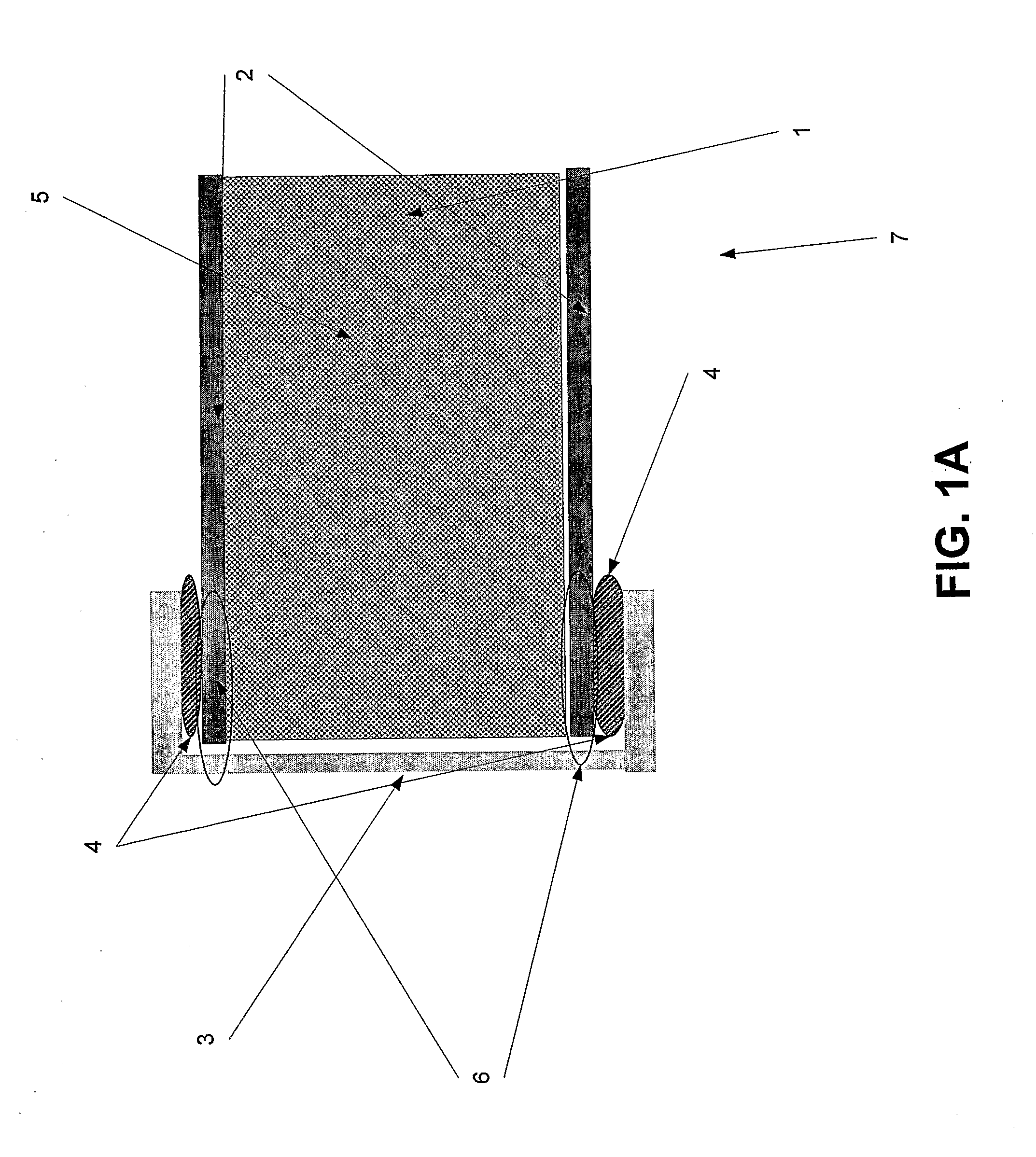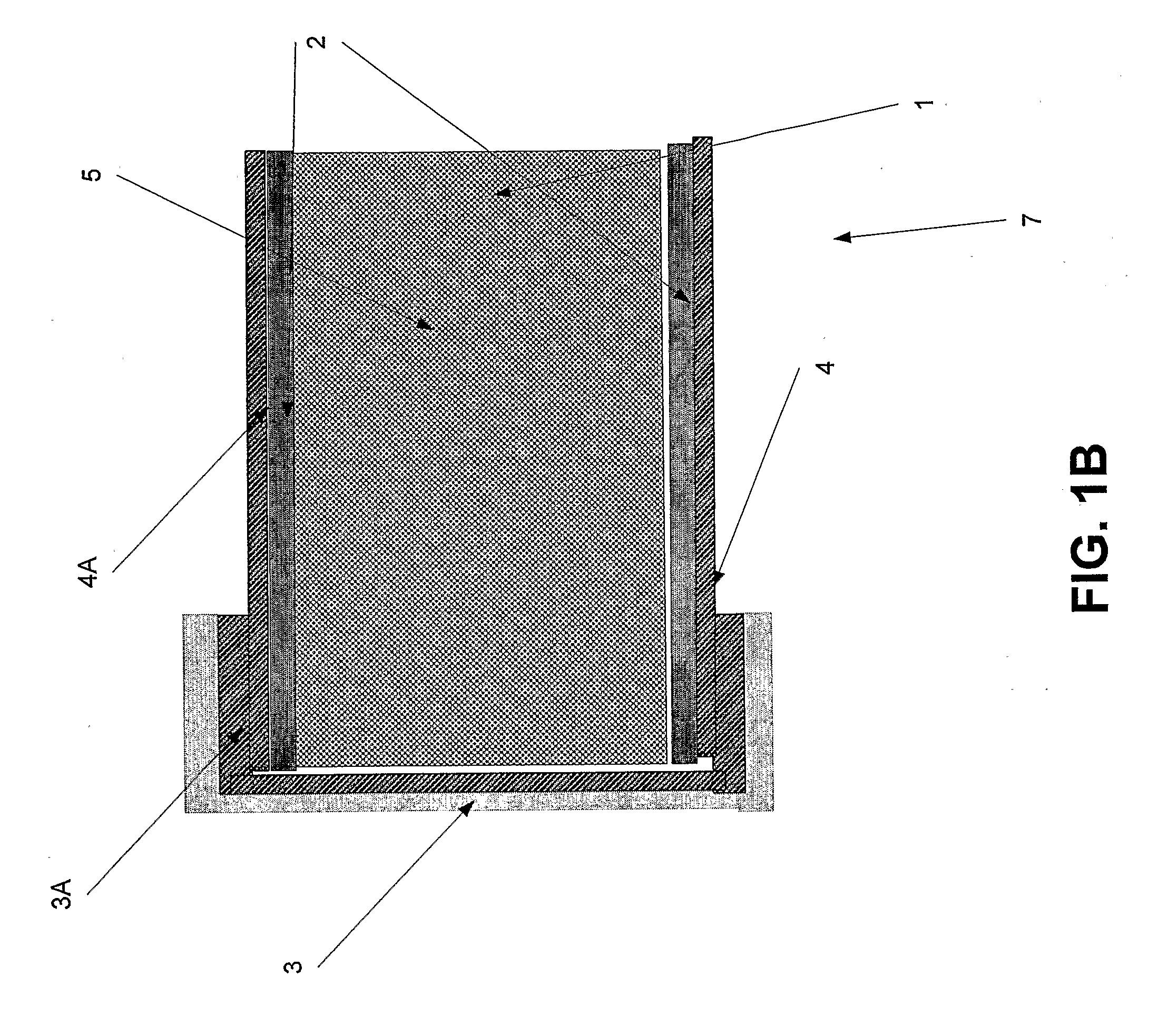Evacuated Thermal Insulation Panel
a technology of vacuum panels and thermal insulation materials, applied in the direction of thermal insulation improvement, pipe protection by thermal insulation, heat insulation, etc., can solve the problems of increasing the pressure level of the prior art insulating vacuum panels, limiting the effective life of the panel, etc., and achieve the effect of facilitating access
- Summary
- Abstract
- Description
- Claims
- Application Information
AI Technical Summary
Benefits of technology
Problems solved by technology
Method used
Image
Examples
Embodiment Construction
[0138]The present embodiments comprise a vacuum thermal insulation panel with low thermal conductivity and features for maintaining the predetermined pressure level range for long periods. In addition, the present embodiments comprise a method for manufacturing of vacuum thermal insulation panels and a method for coupling partition walls to insulation panels in insulation units.
[0139]The principles and operation of an apparatus and method according to the present invention may be better understood with reference to the drawings and accompanying description.
[0140]Before explaining at least one embodiment of the invention in detail, it is to be understood that the invention is not limited in its application to the details of construction and the arrangement of the components set forth in the following description or illustrated in the drawings. The invention is capable of other embodiments or of being practiced or carried out in various ways. Also, it is to be understood that the phra...
PUM
 Login to View More
Login to View More Abstract
Description
Claims
Application Information
 Login to View More
Login to View More - R&D
- Intellectual Property
- Life Sciences
- Materials
- Tech Scout
- Unparalleled Data Quality
- Higher Quality Content
- 60% Fewer Hallucinations
Browse by: Latest US Patents, China's latest patents, Technical Efficacy Thesaurus, Application Domain, Technology Topic, Popular Technical Reports.
© 2025 PatSnap. All rights reserved.Legal|Privacy policy|Modern Slavery Act Transparency Statement|Sitemap|About US| Contact US: help@patsnap.com



